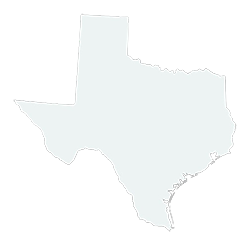Egypt says gas deal with Israel is ‘purely commercial’
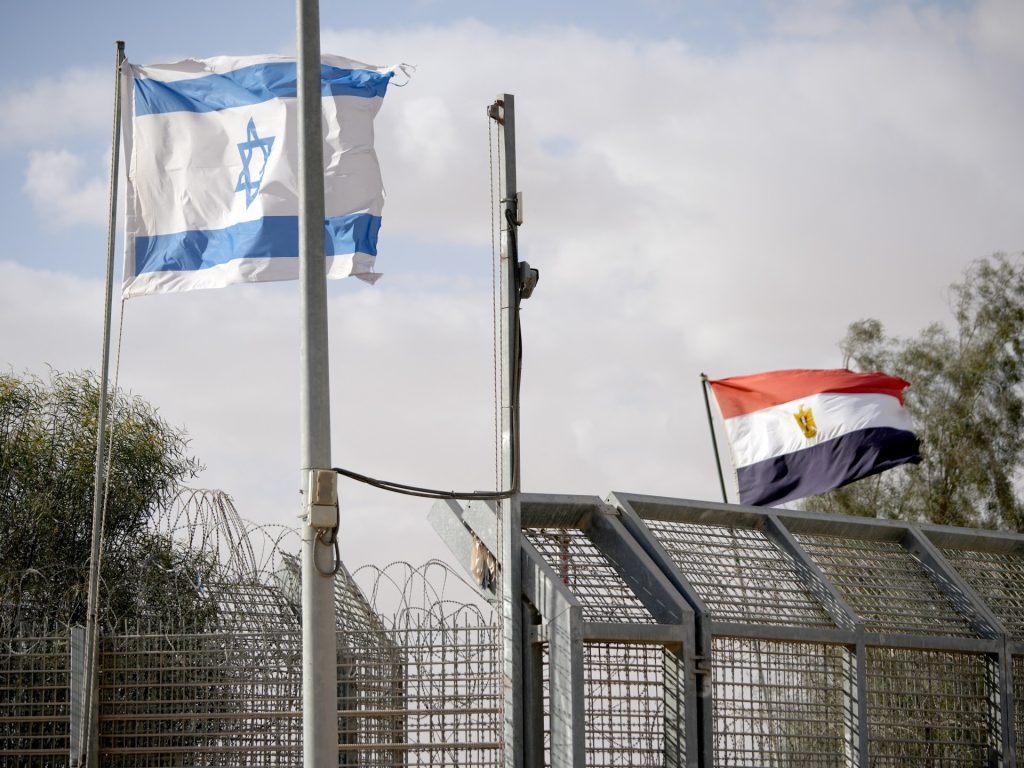
Natural gas agreement worth approximately $35bn comes amid frayed relations over Israel’s genocidal war in Gaza. By News Agencies Published On 18 Dec 202518 Dec 2025 Click here to share on social media share2 Share Egypt has said that Cairo’s natural gas deal with Israel is a “purely commercial” arrangement and that there are no “political dimensions” to the deal. On Thursday, Egypt’s State Information Service (SIS) said the agreement was struck by private energy companies under market rules and without government involvement. Recommended Stories list of 3 itemsend of list “The deal is a purely commercial transaction concluded on the basis of strictly economic and investment considerations, and entails no political dimensions or understandings of any kind,” SIS chief Diaa Rashwan said in a statement. “The agreement serves a clear strategic interest for Egypt, namely strengthening its position as the sole regional hub for gas trading in the Eastern Mediterranean,” Rashwan added. Egypt’s announcement came after Israeli Prime Minister Benjamin Netanyahu announced the approval of the gas agreement with Egypt on Wednesday evening and called it “the largest gas deal in Israel’s history”. “Today, I approved the largest gas deal in Israel’s history. The deal is worth 112 billion shekels [$34.7bn]. Of this total, 58 billion shekels [$18bn] will go to the state coffers,” Netanyahu said during a televised address in Israel, alongside energy minister Eli Cohen. “The agreement is with the American company Chevron, with Israeli partners who will supply gas to Egypt,” Netanyahu added. Israel had signed the export agreement in August with Chevron and its partners to supply up to $35bn of gas to Egypt from the Leviathan natural gas field. But according to a report by the newspaper Israel Hayom, in September, Netanyahu had instructed that the gas agreement with Egypt should not move forward without his approval. His instructions came amid Israel’s allegations that Cairo had “violated the peace treaty” signed between the two countries through military deployments in Sinai – claims that Egypt has denied. Advertisement On March 26, 1979, Egypt and Israel signed a peace treaty in Washington, DC following the 1978 Camp David Accords. Its key provisions include ending the state of war, normalising relations, the full withdrawal of Israeli military forces and civilians from the Sinai Peninsula, and keeping the area demilitarised. According to CNN, Netanyahu’s announcement of the gas deal on Wednesday comes amid pressure from US President Donald Trump, who has been trying to organise a meeting between Egyptian President Abdel Fattah el-Sisi and Netanyahu. Relations between the two leaders have been frayed, and they have not met publicly in years. Tensions also intensified after Israel’s genocide in Gaza began. Egypt has been a vocal critic of Israel’s actions in Gaza and played a key role in mediating a ceasefire in the enclave. But the truce is fragile and continues to fray amid a deepening humanitarian emergency across the Strip. Adblock test (Why?)
French anaesthetist jailed for life after poisoning and killing patients
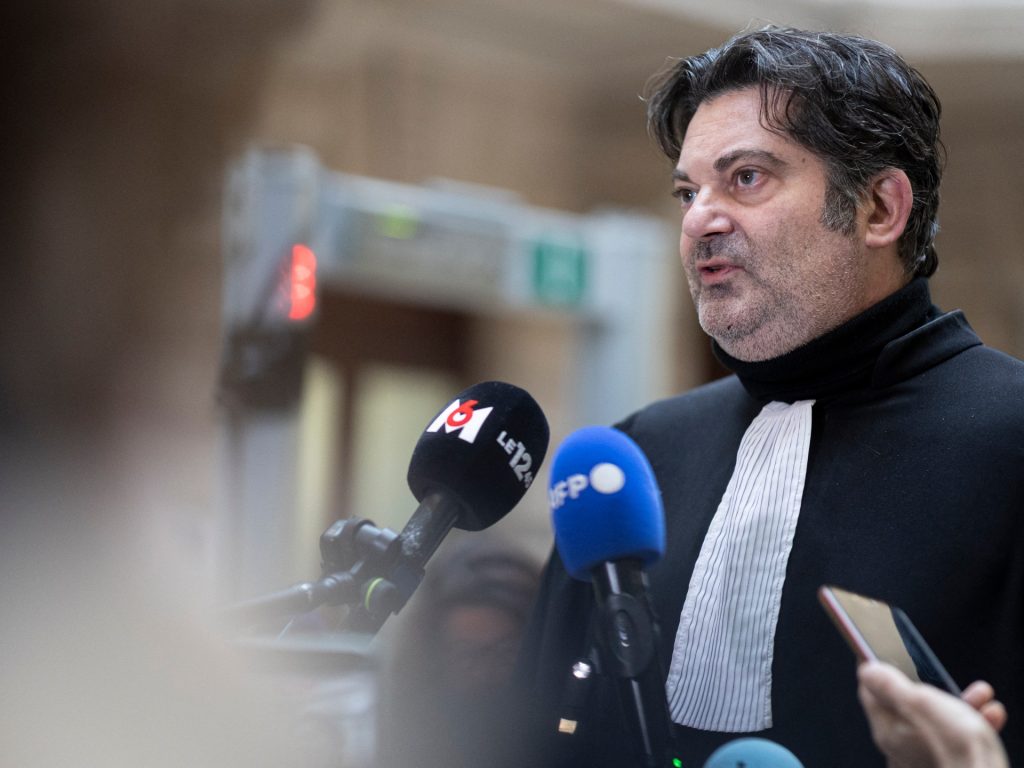
The prosecution accused Frederic Pechier of having ‘used medicine to kill’ at least 12 people. Published On 18 Dec 202518 Dec 2025 Click here to share on social media share2 Share A French anaesthetist has been sentenced to life in prison after a court found him guilty of poisoning 30 patients during operations, killing 12. The Doubs Assize Court delivered its verdict on Thursday, with prosecutors describing the doctor as “one of the greatest criminals in history”. Recommended Stories list of 4 itemsend of list Frederic Pechier, 53, was convicted of poisoning patients between 2008 and 2017 while working in two private clinics in the eastern city of Besancon. The victims ranged in age from four to 89. The verdict followed 15 weeks of hearings in a trial that lasted three months, marked by technical medical testimony and emotional accounts from victims’ families. The court heard that Pechier targeted patients treated by colleagues with whom he was in conflict, to discredit them professionally. In some cases, prosecutors said, he intervened to resuscitate patients he had poisoned not to save them, but to conceal his actions. The prosecution argued that Pechier acted to harm and “psychologically damage” healthcare workers he saw as rivals to “feed his thirst for power”. Christine de Curraize, the prosecuting lawyer, said Pechier’s goal in each poisoning was to “witness the downfall of his trapped colleague, to revel in his helplessness” before stepping in to resuscitate patients and present himself as the “doctor everyone admired”. Given the floor for a final statement on Monday, the last day of the trial, Pechier again denied the accusations, repeating a claim he maintained throughout the proceedings. Advertisement “I am not a poisoner,” he said. During closing arguments, the prosecution accused Pechier of having “used medicine to kill”. Pechier’s lawyers said they intend to appeal. He has 10 days to do so under French law. Adblock test (Why?)
Can India catch up with the US, Taiwan and China in the global chip race?

In October, a small electronics manufacturer in the western Indian state of Gujarat shipped its first batch of chip modules to a client in California. Kaynes Semicon, together with Japanese and Malaysian technology partners, assembled the chips in a new factory funded with incentives under Indian Prime Minister Narendra Modi’s $10bn semiconductor push announced in 2021. Modi has been trying to position India as an additional manufacturing hub for global companies that may be looking to expand their production beyond China, with limited success. One sign of that is India’s first commercial foundry for mature chips that is currently under construction, also in Gujarat. The $11bn project is supported by technology transfer from a Taiwanese chipmaker and has onboarded the United States chip giant Intel as a potential customer. With companies the world over hungering for chips, India’s entry into that business could boost its role in global supply chains. But experts caution that India still has a long way to go in attracting more foreign investment and catching up in cutting-edge technology. Unprecedented momentum Semiconductor chips are designed, fabricated in foundries, and then assembled and packaged for commercial use. The US leads in chip design, Taiwan in fabrication, and China, increasingly, in packaging. The upcoming foundry in Gujarat is a collaboration between India’s Tata Group, one of the largest conglomerates in the country, and Taiwan’s Powerchip Semiconductor Manufacturing Corporation (PSMC), which is assisting with the plant’s construction and technology transfer. Advertisement On December 8, Tata Electronics also signed an agreement with Intel to explore the manufacturing and packaging of its products in Tata’s upcoming facilities, including the foundry. The partnership will address the growing domestic demand. Last year, Tata was approved for a 50 percent subsidy from the Modi government for the foundry, along with additional state-level incentives, and could come online as early as December 2026. Even if delayed, the project marks a pivotal moment for India, which has seen multiple attempts to build a commercial fab stall in the past. The foundry will focus on fabricating chips ranging from 28 nanometres (nm) to 110nm, typically referred to as mature chips because they are comparatively easier to produce than smaller 7nm or 3nm chips. Mature chips are used in most consumer and power electronics, while the smaller chips are in high demand for AI data centres and high-performance computing. Globally, the technology for mature chips is more widely available and distributed. Taiwan leads production of these chips, with China fast catching up, though Taiwan’s TSMC dominates production for cutting-edge nodes below 7nm. “India has long been strong in chip design, but the challenge has been converting that strength into semiconductor manufacturing,” said Stephen Ezell, vice president for global innovation policy at the Washington, DC-based Information Technology and Innovation Foundation (ITIF). “In the past two to three years, there’s been more progress on that front than in the previous decade – driven by stronger political will at both the central and state levels, and a more coordinated push from the private sector to commit to these investments,” Ezell told Al Jazeera. Easy entry point More than half of the Modi government’s $10bn in semiconductor incentives is earmarked for the Tata-PSMC venture, with the remainder supporting nine other projects focused mainly on the assembly, testing and packaging (ATP) stage of the supply chain. These are India’s first such projects – one by Idaho-based Micron Technology, also in Gujarat, and another by the Tata Group in the northeastern Assam state. Both will use in-house technologies and have drawn investments of $2.7bn and $3.3bn, respectively. The remaining projects are smaller, with cumulative investments of about $2bn, and are backed by technology partners such as Taiwan’s Foxconn, Japan’s Renesas Electronics, and Thailand’s Stars Microelectronics. “ATP units offer a lower path of resistance compared to a large foundry, requiring smaller investments – typically between $50m and $1bn. They also carry less risk, and the necessary technology know-how is widely available globally,” Ashok Chandak, president of the India Electronics and Semiconductor Association (IESA), told Al Jazeera. Advertisement Still, most of the projects are behind schedule. Micron’s facility, approved for incentives in June 2023, was initially expected to begin production by late 2024. However, the company noted in its fiscal 2025 report that the Gujarat facility will “address demand in the latter half of this decade”. Approved in February 2024, the Tata facility was initially slated to be operational by mid-2025, but the timeline has now been pushed to April 2026. When asked for reasons behind the delays, both Micron and Tata declined to comment. One exception is a smaller ATP unit by Kaynes Semicon, which in October exported a consignment of sample chip modules to an anchor client in California – a first for India. Another project by CG Semi, part of India’s Murugappa Group, is in trial runs, with commercial production expected in the coming months. The semiconductor projects under the Tata Group and the Murugappa Group have drawn public scrutiny after Indian online news outlet Scroll.in reported that both companies made massive political donations after they were picked for the projects. As per Scroll.in, the Tata Group donated 7.5 billion rupees ($91m) and 1.25 billion rupees ($15m), respectively, to Modi’s Bharatiya Janata Party (BJP) just weeks after securing government subsidies in February 2024 and ahead of national elections. Neither group had made such large donations to the party before. Such donations are not prohibited by law. Both the Tata Group and the Murugappa Group declined to comment to Al Jazeera regarding the reports. Meeting domestic demand a key priority The upcoming projects in India – both the foundry and the ATP units – will primarily focus on legacy, or mature, chips sized between 28nm and 110nm. While these chips are not at the cutting-edge of semiconductor technology, they account for the bulk of global demand, with applications across cars, industrial equipment and consumer electronics. China dominates the ATP segment globally with a 30 percent share and accounted for 42 percent of semiconductor
‘No evidence’ Australia’s Bondi gunmen trained in the Philippines: Official
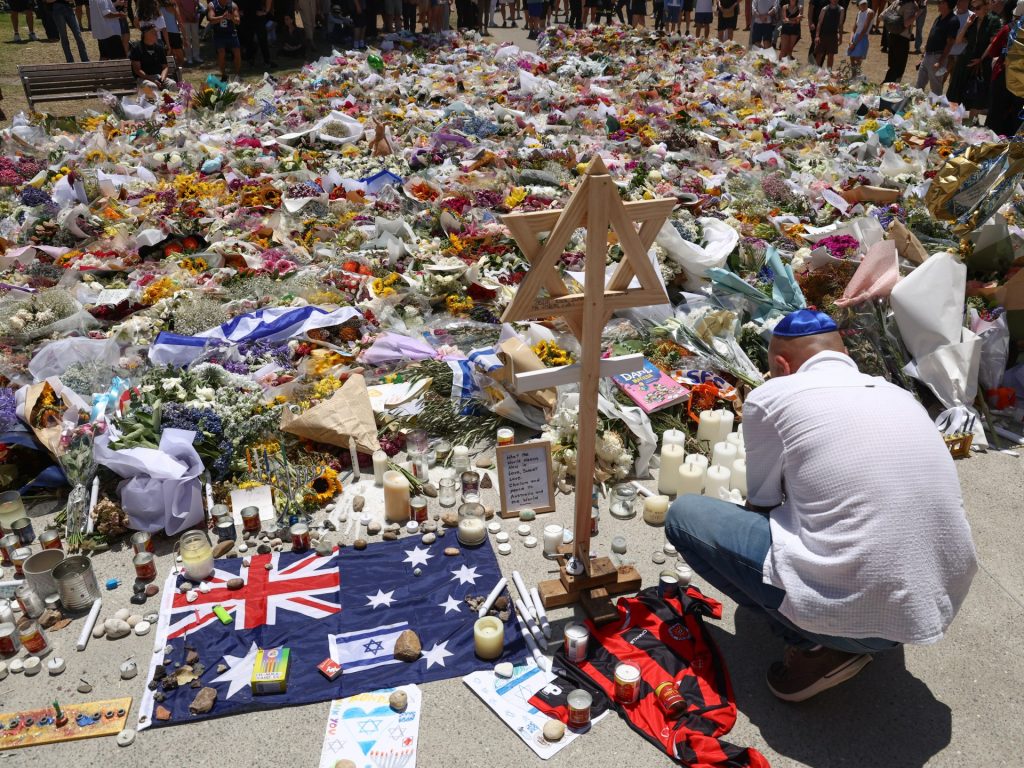
Philippine official said ‘a mere visit’ to the country does not support claims the men underwent ‘terrorist training’. There is no evidence the suspected gunmen in the deadly Bondi Beach attack received military training in the southern Philippines, Manila’s national security adviser has said, as Australia announced plans to introduce measures to tighten the country’s hate speech laws. In a Wednesday statement, Philippine National Security Adviser Eduardo Ano confirmed the two suspects in Sunday’s attack in Sydney, Australia – which saw 15 people killed after gunmen opened fire at a Jewish event – were in the country from November 1 to 28 this year. Recommended Stories list of 3 itemsend of list Ano said immigration records showed that 50-year-old Sajid Akram and his 24-year-old son Naveed Akram travelled via the Philippine capital Manila to Davao City on the southern island of Mindanao. He added that Sajid had entered the country on an Indian passport, while Naveed entered on an Australian one. Ano added that there was “no evidence” that the men had received “any form of military training” while in the country. “A mere visit does not support allegations of terrorist training, and the duration of their stay would not have allowed for any meaningful or structured training,” he said. The men mostly stayed in their hotel rooms when in Davao, according to a report by local news outlet MindaNews. Staff at the hotel said the pair checked in on November 1 and rarely went out for more than an hour at a time during their almost monthlong stay. Australian authorities announced on Wednesday that Naveed Akram had been charged with 59 offences for his role in the attack, including murder and terror charges, when he woke from his coma. Sajid Akram, his father, was shot dead by police at the scene. Ano also suggested that reports describing Mindanao – home to most of the Catholic-majority country’s Muslim population, plagued by a decades-long secessionist conflict – as a “hotspot for violent extremism or Islamic State ideology” were “outdated and misleading”. Advertisement “Since the 2017 Marawi Siege, Philippine security forces have significantly degraded ISIS-affiliated groups in the country,” he said, referring to a five-month battle in which the ISIL-inspired Maute group seized the southern city and fought government forces. “The remnants of these groups have been fragmented, deprived of leadership, and operationally degraded,” Ano added. A 2014 peace agreement, which saw rebels drop their secessionist aspirations in exchange for a more powerful and better-funded Muslim autonomous region called Bangsamoro, has also brought a degree of calm to Mindanao. But smaller rebel groups continue to carry out sporadic, deadly attacks across the restive southern Philippines’ region. ‘Also an attack on the Australian way of life’: Anthony Albanese On Thursday, Australian Prime Minister Anthony Albanese pledged to introduce new legislation cracking down on hate speech in response to the Bondi Beach attack, as he acknowledged that Australia had witnessed an increase in anti-Semitism since the Hamas-led October 7, 2023, attacks on Israel, and Israel’s genocidal war on Gaza. Announcing the new measures at a news conference, Albanese said his government will seek to introduce legislation making it easier to charge people promoting hate speech and violence – including religious preachers – while new powers will be created to cancel or reject visas of people who spread “hate and division”. The legislation would also develop a regime to target organisations whose leaders engage in hate speech, Albanese added. Albanese said rising anti-Semitism “culminated on Sunday in one of the worst acts of mass murder that this country has ever seen”. “It was an attack on our Jewish community – but it was also an attack on the Australian way of life. Australians are shocked and angry. I am angry. It is clear we need to do more to combat this evil scourge, much more,” he said. New South Wales Premier Chris Minns said on Wednesday he would recall the state parliament next week in order to pass urgent reforms on gun laws. Adblock test (Why?)
US kills 4 in latest Pacific Ocean attack as Venezuela tension spirals
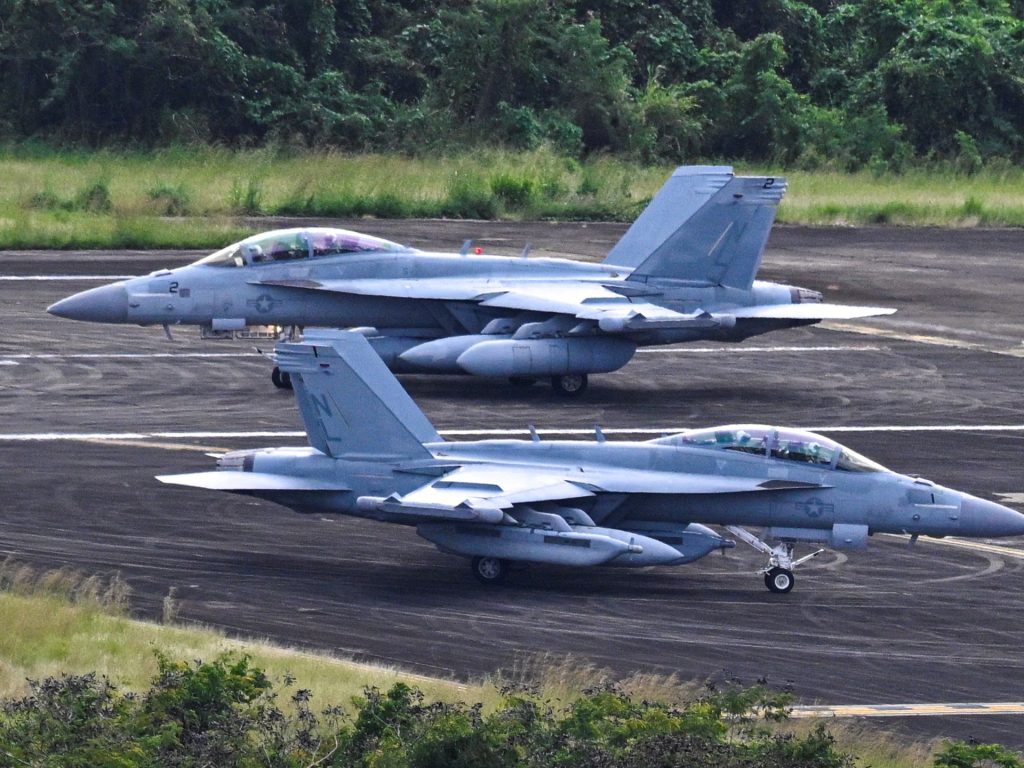
New attack brings death toll to nearly 100 from US strikes on vessels in the eastern Pacific and Caribbean. The United States military said it killed four people in its latest attack on a vessel in the eastern Pacific Ocean, announcing the “lethal” strike after resolutions seeking to rein in President Donald Trump’s aggression towards Venezuela were voted down by US lawmakers. US Southern Command (SOUTHCOM), which is leading the burgeoning “Southern Spear” military operation in the Latin America region, said the attack on Wednesday targeted “four male narco-terrorists” without providing any evidence that the destroyed vessel was involved in drug trafficking. Recommended Stories list of 4 itemsend of list “The vessel was transiting along a known narco-trafficking route in the Eastern Pacific and was engaged in narco-trafficking operations,” SOUTHCOM said in a post on social media alongside a video showing a speedboat being destroyed. Ordered by US Defense Secretary Pete Hegseth, the attack brings to almost 100 the number of people killed in US strikes on 26 vessels – that Washington has acknowledged – in the eastern Pacific Ocean and Caribbean since September. While legal experts have accused the US of carrying out a campaign of extrajudicial killings in international waters, Trump has justified the attacks as necessary to halt the flow of drugs into the US from drug cartels, particularly those based in Venezuela. On Wednesday, the Republican-majority House of Representatives voted 213 to 211 against a resolution directing the president to remove US forces from hostilities with or against Venezuela without congressional authorisation. Advertisement The House also voted 216 to 210 against a resolution that would remove US forces from hostilities with “any presidentially designated terrorist organization in the Western Hemisphere” unless authorised by Congress. The defeat of the resolutions comes as a huge US military deployment is under way in Latin America, involving thousands of troops, Washington’s largest aircraft carrier, and a nuclear-powered submarine, as Trump threatens military action to remove Venezuelan President Nicolas Maduro’s government. On Tuesday, Trump ordered a naval blockade of all oil tankers, which are under US sanctions, entering and leaving Venezuelan ports, a move that Maduro’s government called a “grotesque threat” that was aimed at “stealing the riches that belong to our homeland”. Last week, US soldiers boarded and seized the Skipper oil tanker off the coast of Venezuela and were reported to have brought the vessel to the US state of Texas to unload its oil cargo. The New York Times reports that Venezuela’s navy has started to escort ships carrying petroleum products from ports following Trump’s announcement of the sea blockade. Several ships left the country’s east coast with a naval escort on Tuesday evening and Wednesday morning, the Times reported, citing three people familiar with the matter. Latin American leaders and United Nations Secretary-General Antonio Guterres have also expressed concerns as the prospect of war looms larger as tensions mount between Washington and Caracas. Mexican President Claudia Sheinbaum called on the UN to act to prevent violence in Venezuela. “It has not been present. It must assume its role to prevent any bloodshed,” she said on Wednesday, reiterating Mexico’s position of being against intervention and foreign interference in Venezuela. Brazil’s President Luiz Inacio Lula da Silva said he was “concerned about President Trump’s attitudes towards Latin America, about the threats”. Lula also said that he had urged dialogue between Caracas and Washington in a call with Trump earlier this month. “The power of the word can outweigh the power of the gun … I said to Trump: ‘If you are interested in talking to Venezuela properly, we can contribute. Now, you have to be willing to talk, you have to be patient,’” Lula said. In Venezuela, Maduro held a phone call with UN chief Guterres and denounced the US naval blockade, according to reports. Maduro “denounced … the recent escalation of colonial threats against Venezuela”, the Agencia Venezuela news site reported. Advertisement The Venezuelan leader also described as “barbaric diplomacy” comments by US administration officials that “Venezuela’s natural resources belong to it”. Adblock test (Why?)
AFCON 2025: Who are the top players to watch in Morocco?
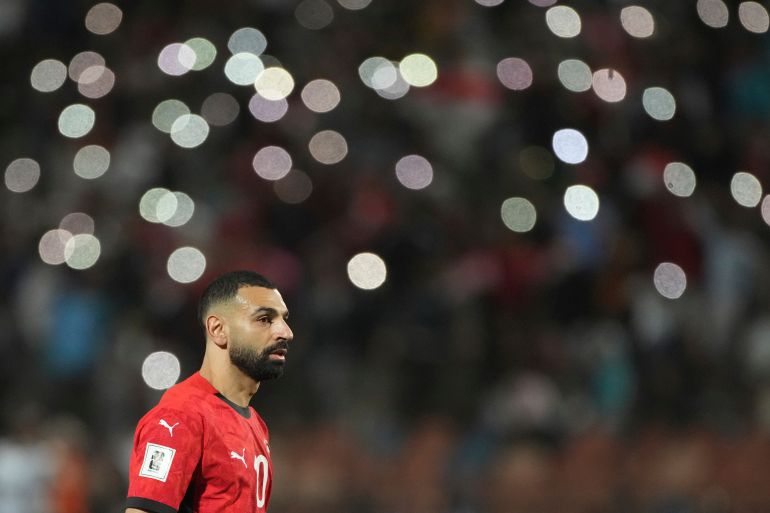
The CAF Africa Cup of Nations (AFCON) gets under way on Sunday, with the host nation Morocco facing Comoros in Group A at Rabat’s Prince Moulay Abdellah Stadium. Across the four weeklong continental showpiece, some of the game’s biggest names will take centre stage. Here’s a look at our top-10 players who are set to light up the competition: ⚽ Mohamed Salah (Egypt) Arguably the biggest African football star of his generation, Mohamed Salah heads into the tournament hoping to lead Egypt to a record-extending eighth title. But the 33-year-old arrives short of his usual standards: he has scored just five goals in 20 matches across all competitions this season and has slipped down the pecking order under Liverpool’s new manager, Arne Slot. Yet Salah’s importance to Egypt has never been in doubt. The two-time African Footballer of the Year remains their talisman, and his nine goals in the CAF World Cup qualifying phase were crucial in securing a spot at next summer’s World Cup. At AFCON, Salah will be chasing both redemption and a return to the red-hot form that earned him the nickname “the Egyptian King”. Mohamed Salah, who has struggled for form at Liverpool, has raised doubts over whether he will play for the club again after AFCON [File: Amr Nabil/AP] ⚽ Achraf Hakimi (Morocco) Fresh off the high of being crowned African footballer of the year, Achraf Hakimi headlines the cast of star home nation players set to take the field in Morocco. The 27-year-old, widely regarded as one of the best right-backs in the world, was instrumental in PSG’s treble-winning campaign, capped off by their long-awaited UEFA Champions League triumph in May. Advertisement As Morocco’s captain, Hakimi carries the hopes of millions in the football-mad country. Morocco’s Atlas Lions will look to him not only for his defensive stability but also for his playmaking spark as they chase only the second AFCON title in their history – 50 years after their maiden crown. There had been concerns over Achraf Hakimi’s availability for AFCON due to an ankle injury, but Morocco’s head coach, Walid Regragui, is optimistic the full-back will recover in time to play [File: Aurelien Morissard/AP] ⚽ Victor Osimhen (Nigeria) Still recovering from the heartbreak of missing out on the 2026 World Cup, Victor Osimhen will look for solace and vindication at the continental championship. The Galatasaray forward, known for his trademark face mask, has been in prolific form this season with 12 goals in 16 matches across all competitions, including six in the Champions League. Despite sitting second on Nigeria’s all-time scorers list, Osimhen has struggled to translate that dominance to major tournaments: he has found the net only once, at the previous AFCON in 2023 when the Super Eagles reached the final. This edition offers him a chance to change that narrative. Victor Osimhen, pictured, and his Nigeria teammates are hurting after another unsuccessful World Cup qualifying campaign with the quickest route to redemption being an AFCON title [File: Luc Gnago/Reuters] ⚽ Bryan Mbeumo (Cameroon) Rediscovering his scoring touch, star forward Bryan Mbeumo could play a crucial role in Cameroon’s campaign as they begin a new chapter under a new coach following their failure to qualify for the World Cup. With seven goals across all competitions, Mbeumo has been Manchester United’s standout performer in an otherwise mixed and chaotic season for the Red Devils. An injury kept Mbeumo out of the previous AFCON, but this time, the 26-year-old has a golden opportunity to clinch his first trophy with Cameroon. The task, however, will not be straightforward. With veteran striker Vincent Aboubakar surprisingly left out of the squad, Mbeumo inherits the dual responsibility of leading the line and captaining the team. Cameroon forward Bryan Mbeumo has been Manchester United’s highest scorer this season [File: Gregory Bull/AP] ⚽ Wilfried Zaha (Ivory Coast) An impressive loan spell with Charlotte in Major League Soccer (MLS) has earned Wilfried Zaha a surprise recall to the national team for the first time in two years. The 33-year-old winger was omitted from the squad that won AFCON 2023, but his return to form, marked by 10 goals and 10 assists this season, proved too compelling to ignore. Advertisement Zaha’s years of experience, ability to take on defenders and current sharpness should provide a timely boost to the reigning champions’ aspirations of defending their AFCON title in Morocco. Wilfried Zaha won two caps for England before switching international allegiance to the Ivory Coast [File: Nell Redmond/AP] ⚽ Sadio Mane (Senegal) Sadio Mane once dominated headlines with his exploits in Europe for clubs such as Liverpool and Bayern Munich, but his move to Al Nassr in the Saudi Pro League has shifted much of the media spotlight away from him. Yet the 33-year-old, widely regarded as one of Africa’s greatest players, remains a decisive figure for Senegal: his five goals in CAF World Cup qualifying were the most by any Senegalese player. In Morocco, Mane will aim to replicate the form that earned him player of the tournament honours at AFCON 2021 when the winger guided the Teranga Lions to their first continental title. Senegal’s Sadio Mane has 12 goal involvements in 17 matches for Al Nassr this season [File: Kenzo Tribouillard/AFP] ⚽ Iliman Ndiaye (Senegal) With six goal involvements in the Premier League, Iliman Ndiaye has been one of Everton’s most reliable players in the Premier League this season, and the 25-year-old will hope to bring that positive influence to Senegal’s attack. The midfielder, known for his dribbling and finishing, has enjoyed a rapid ascent in recent years, moving from England’s second-tier league in 2023 to being a key contributor for the Toffees as they close in on a top-six spot in the top-flight. On the international stage, Ndiaye has been an integral part of Senegal’s setup for the past three years, and he will look to make his mark at his third AFCON appearance. Iliman Ndiaye is a key part of Everton’s attack and will hope to carry
Winter storms cause war-damaged buildings to collapse in Gaza
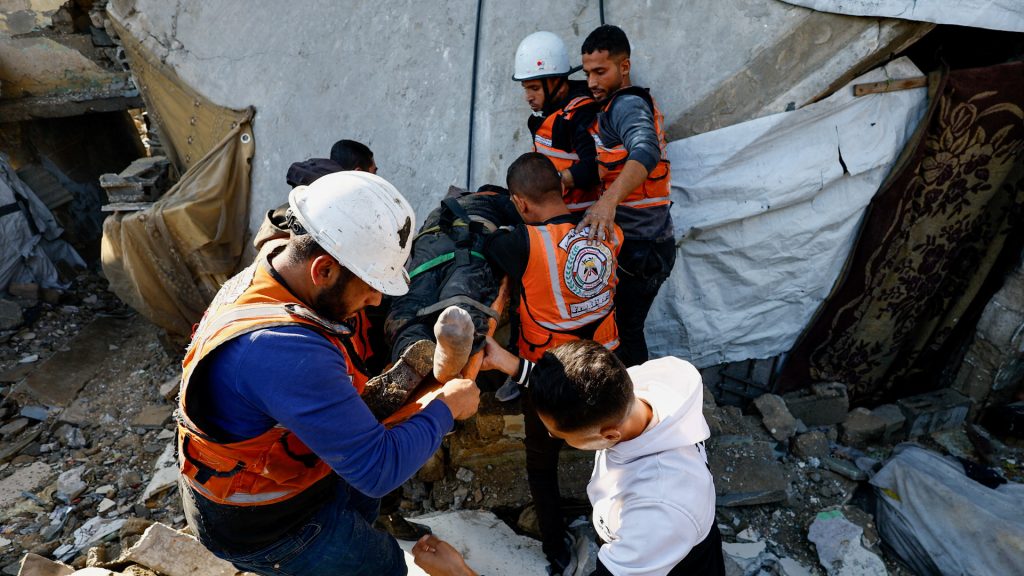
NewsFeed Heavy rain and strong winds are causing buildings weakened by Israeli bombardment to collapse across Gaza. At least 17 buildings have fallen since the beginning of December, as hundreds of thousands Palestinians shelter in unsafe buildings or makeshift tents. Published On 17 Dec 202517 Dec 2025 Click here to share on social media share2 Share Adblock test (Why?)
Faced with Trump’s deportation push, US teachers fear leaving the classroom

Washington, DC – For the past two years, weekdays for Susanna have meant thumbing through picture books, organising cubby holes and leading classroom choruses of songs. But her work as a pre-school teacher came to a screeching halt in October, when she found out her application to renew her work permit had been denied. Recommended Stories list of 3 itemsend of list Susanna, who uses a pseudonym in this article for fear of reprisals, is one of the nearly 10 percent of teachers in the United States who are immigrants. But while the US has increasingly looked abroad to fill teacher shortages, some foreign-born teachers say the deportation push under President Donald Trump has threatened their livelihoods — and risks traumatising their students. Susanna, an asylum applicant who fled violence in Guatemala nearly a decade ago, said that losing her permit meant she had to stop working immediately. She recalls breaking the news to her students, some of whom are only three years old. Many were too young to understand. “In one week, I lost everything,” Susanna told Al Jazeera in Spanish. “When I told the kids goodbye, they asked me why, and I told them, ‘I can only tell you goodbye.’ There were kids that hugged me, and it hurt my heart a lot.” Advocates warn that the sudden departure of teachers could harm the development of young children in school [Mohammed Zain Shafi Khan/Al Jazeera] Looking abroad for teachers Estimates vary as to how many foreign-born teachers currently work in the US. But one 2019 report from George Mason University found that there were 857,200 immigrants among the country’s 8.1 million teachers, in roles ranging from pre-school to university. Advertisement For the 2023-2024 school year alone, the US government brought 6,716 full-time teachers to the country on temporary exchange visas to fill openings in pre-kindergarten, primary and secondary school education. Many hailed from the Philippines, as well as countries like Jamaica, Spain and Colombia. The uncertainty for immigrants under Trump’s second term, however, has proven disruptive to schools that rely heavily on foreign-born teachers. That is the case for the pre-school where Susanna worked, CommuniKids, which offers language immersion programmes in Washington, DC. Cofounder and president Raul Echevarría estimates that immigrants — both citizens and non-citizens working with legal authorisation — comprise about 90 percent of CommuniKids’s staff. But Echevarría told Al Jazeera that the push to rescind legal pathways to immigration has jeopardised the employment of several faculty members. Five other teachers at the school have seen their ability to work affected by changes to the Temporary Protected Status (TPS) programme. All five, Echevarría explained, were originally from Venezuela. But in October, the Trump administration ended TPS status for more than 350,000 Venezuelan citizens, including the teachers at CommuniKids. Their authorisation to work legally in the US will expire on October 2, 2026, according to the US Citizenship and Immigration Services website. “These teachers lost their ability to make a living,” Echevarria said, noting that his school requires educators with expertise in languages like Spanish, French and Mandarin. CommuniKids, a language immersion school in Washington, DC, helps young children develop skills in French, Mandarin and Spanish [Mohammed Zain Shafi Khan/Al Jazeera] ‘Strong bonds’ For the schools themselves, the losses can be devastating. Every state in the US has reported teacher shortages to the federal government. But advocates say the high stress and low pay of education make teachers difficult to recruit and keep. That leads some states to look abroad for education workers. In North Carolina, for example, 1,063 foreign nationals worked full-time as grade-school teachers on temporary J-1 visas during the 2023-2024 school year. The top destinations for such recruits were all southern states: North Carolina was followed by Florida with 996 teachers on J-1 visas, and Texas with 761. But Echevarria said some of the biggest impacts of the deportation drive are felt by the students themselves. “Our students develop strong bonds with their teachers, and all of a sudden, overnight, they lost their teachers,” said Echevarría. Advertisement “Their number one superpower”, he added, “is their ability to empathise and to create strong, effective bonds with people from any background”. But when those bonds are broken, there can be mental health consequences and setbacks for educational achievement, particularly among younger children. A 2024 study published by the American Educational Research Association found that, when teachers leave midyear, children’s language development takes a measurable hit. In other words, the loss of a familiar teacher — someone who knows their routines, strengths and fears — can quietly stall a child’s progress. The consequences extend to a child’s sense of self and stability. Mental health consequences For parents like Michelle Howell, whose child attends CommuniKids, the loss of teachers has also made the classroom environment feel fragile. “The teachers there aren’t just teachers for these young kids,” Howell said of CommuniKids. “They’re like extended family. “They hug them, they hold them, they do the things a parent would do. When those people disappear, it’s not just hard for the kids. It’s hard for everyone.” Howell, who is Chinese American, said the sudden disappearances reminded her of her own family’s history. “I used to read about things like this happening in China, the place my family left to find safety,” she said. “It’s very disturbing to know that what we ran from back then is our reality now. People disappear.” School psychologist Maria C, who asked to remain anonymous to protect her work in the Texas public school system, has noticed the children she works with struggling with instability caused by the deportation push. The disappearance of a loved one or mentor — say, a favourite teacher — could flood a child’s body with cortisol, the hormone meant to protect them in moments of danger, she explained. But when that stress becomes chronic, the same hormone starts to hurt more than it helps. It interferes with memory, attention and emotional regulation. “For some, it looks like anxiety. For others,
Russia-Ukraine war: List of key events, day 1,392

These are the key developments from day 1,392 of Russia’s war on Ukraine. Published On 17 Dec 202517 Dec 2025 Click here to share on social media share2 Share Here is where things stand on Wednesday, December 17: Fighting Kyiv Mayor Vitalii Klitschko said explosions were heard in the Ukrainian capital and warned people to stay in shelters late on Tuesday night as air defences worked to repel a Russian attack. Russian forces launched a “massive” drone attack on Ukraine’s Sumy region, targeting energy infrastructure and causing electricity blackouts, Governor Oleh Hryhorov said on Telegram late on Tuesday night. Power outages were also reported in the Donetsk region, Ukrainian Deputy Minister of Energy Mykola Kolisnyk said. A Russian attack on electrical substations and other energy infrastructure left 280,000 households in Ukraine’s Odesa region without power, Governor Oleh Kiper wrote on Telegram. Electricity was later restored to 220,000 homes, Kiper said, but extensive work was still needed to repair damaged networks. The Russian-occupied Zaporizhzhia nuclear power plant in Ukraine is currently receiving electricity through only one of two external power lines, the facility’s Russian management said, after the other line was disconnected due to military activity. Russian forces shot down 180 Ukrainian drones in one day, Russia’s Ministry of Defence said, according to the state-run TASS news agency. The ambassador-at-large of the Russian Ministry of Foreign Affairs, Rodion Miroshnik, told TASS that Ukrainian attacks had killed 14 Russian civilians and injured nearly 70, including in the Russian-occupied Kherson and Zaporizhia regions of Ukraine, over the past week. Advertisement Ceasefire talks German Chancellor Friedrich Merz shared details about a potential European-led multinational force being considered as part of discussions on security guarantees for Ukraine. “We would secure a demilitarised zone between the warring parties and, to be very specific, we would also act against corresponding Russian incursions and attacks,” Merz told ZDF public television, adding that the talks “we’re not there yet”. Regional security Bulgaria, Estonia, Finland, Latvia, Lithuania, Poland, Romania and Sweden said in a joint statement on Tuesday that “Russia is the most significant, direct and long-term threat to our security and to peace and stability in the Euro-Atlantic area”. After the Eastern Flank Summit in Helsinki, Finland, Polish Prime Minister Donald Tusk said that the grouping of European countries discussed an “anti-drone wall” that would require “billions in expenditure here”. Germany’s Federal Ministry of Defence said that it ended the deployment to Poland of its Patriot systems and soldiers from its Air and Missile Defence Task Force, after the mission concluded as planned. UK Secretary of State for Defence John Healey said the United Kingdom is spending 600 million pounds (more than $800 million) to buy “thousands of air defence systems, missiles, and automated turrets to shoot down drones” for Ukraine, during a virtual meeting of the Ukraine Defence Contact Group, according to the Kyiv Independent news outlet. German Defence Minister Boris Pistorius told the same meeting that Germany would “transfer a significant number of AIM-9 Sidewinder missiles” to Ukraine next year. Reparations The leaders of 34 European countries signed an agreement in The Hague to create an International Claims Commission for Ukraine to seek compensation for hundreds of billions of dollars in damage from Russian attacks. “Every Russian war crime must have consequences for those who committed them,” Ukrainian President Volodymyr Zelenskyy said before signing the agreement. “The goal is to have validated claims that will ultimately be paid by Russia. It will really have to be paid by Russia,” Dutch Minister of Foreign Affairs David van Weel said. Adblock test (Why?)
Trump stands by chief of staff after shock remarks about Vance, Bondi, Musk
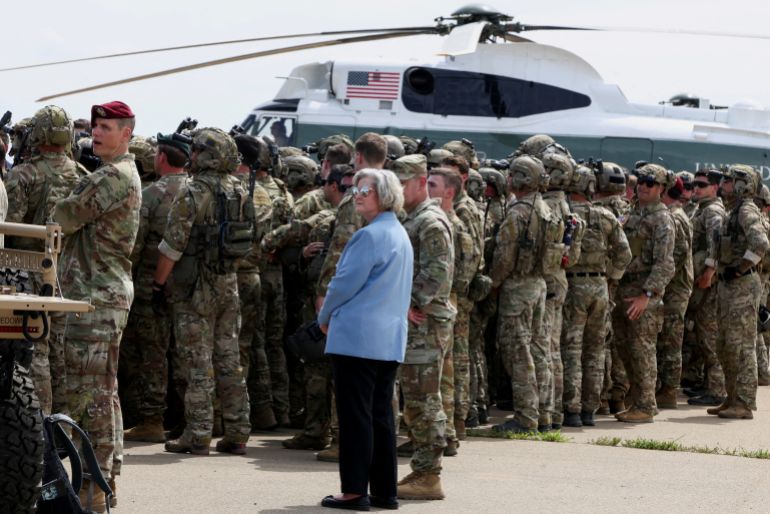
US President Donald Trump said he was standing by his White House chief of staff, Susie Wiles, after Vanity Fair magazine published interviews in which Wiles revealed internal tensions in Trump’s administration and painted an unflattering picture of the roles played by some of the president’s inner circle. Trump, who regularly describes Wiles as the “most powerful woman in the world”, told the New York Post on Tuesday that he has full confidence in his chief of staff and that she had “done a fantastic job”. Recommended Stories list of 4 itemsend of list Vanity Fair published two articles based on the interviews, giving insights into what Wiles thinks about other key figures in Trump’s second presidency. Speaking about Trump, Wiles described the teetotaling president as having “an alcoholic’s personality” and an eye for vengeance against perceived enemies. “He has an alcoholic’s personality,” Wiles said of Trump, explaining that her upbringing with an alcoholic father prepared her for managing “big personalities”. Trump does not drink, she noted, but operates with “a view that there’s nothing he can’t do. Nothing, zero, nothing”. In his defence of Wiles, Trump said she was right to describe him personally as having an “alcoholic’s personality”, even though he does not drink alcohol. “I’ve often said that if I did, I’d have a very good chance of being an alcoholic,” Trump said. “I have said that many times about myself, I do. It’s a very possessive personality,” he said. White House Chief of Staff Susie Wiles, centre, stands with US Army members during US President Donald Trump’s visit to Fort Bragg in North Carolina, in June 2025 [Evelyn Hockstein/Reuters] Speaking on the Trump administration’s failure to quickly deliver its promise to share information related to convicted sex offender Jeffrey Epstein, Wiles suggested that Trump’s attorney general, Pam Bondi, had failed to clearly read the situation with the public. Advertisement “First, she gave them binders full of nothingness,” Wiles said of Bondi, noting that Vice President JD Vance had more fully grasped how important the issue was to some people, since he is himself “a conspiracy theorist”. Of Trump’s inclusion in the Epstein files, Wiles said, “We know he’s in the file”, but claimed the file did not show him doing “anything awful”. Referring to other members of the Trump administration, Wiles called Russ Vought, the chief of the White House Office of Management and Budget, a “right-wing absolute zealot” and branded tech tycoon Elon Musk an “odd, odd duck”, Vanity Fair said. On Ukraine, Wiles said that Trump believes Russian President Vladimir Putin “wants the whole country”, despite Washington’s push for a peace deal. Wiles also affirmed that Trump wants to keep bombing alleged drug boats in the waters off the coast of Venezuela until that country’s leader, Nicolas Maduro, “cries uncle”. In a post on X, Wiles called the Vanity Fair story “a disingenuously framed hit piece on me and the finest President, White House staff, and Cabinet in history”, saying it omitted important context and selectively quoted her to create a negative narrative. Other members of Trump’s inner circle also defended Wiles after the articles were published. Vance said in a speech in Pennsylvania that he and Wiles had “joked in private and in public” about him believing conspiracy theories. “We have our disagreements, we agree on much more than we disagree, but I’ve never seen her be disloyal to the president of the United States,” Vance said. White House press secretary Karoline Leavitt told reporters outside the West Wing that Wiles was “incredible” and accused Vanity Fair of the “bias of omission”, while Secretary of Defense Pete Hegseth said on X that there was “absolutely nobody better!” than Wiles. Adblock test (Why?)
